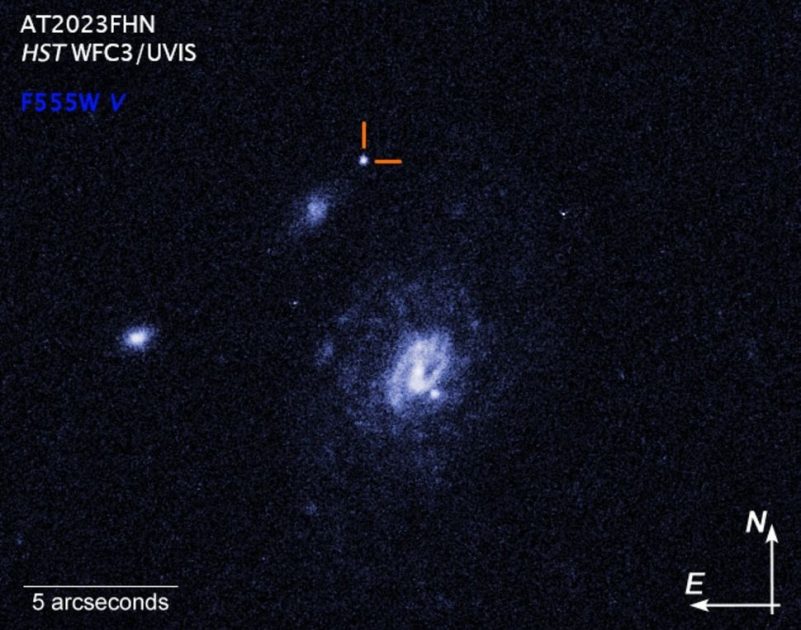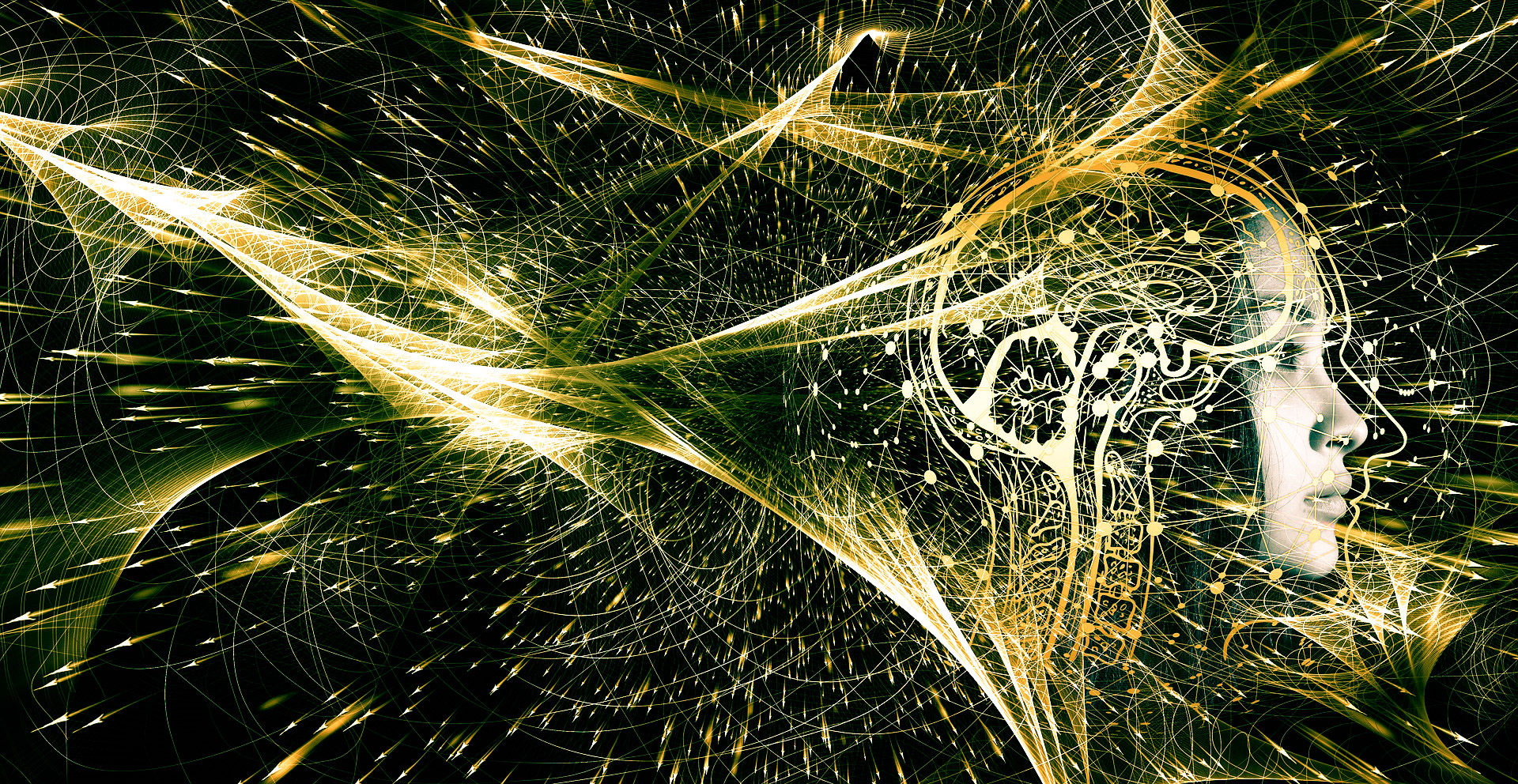Hubble spots uniquely bright bursts of light in intergalactic space
The Hubble Space Telescope has captured a Luminous Fast Blue Optical Transient (LFBOT), an unprecedented burst of light in the vast emptiness between galaxies over 3 billion light-years away. LFBOTs are enigmatic events, emitting intense blue light and vanishing within days, unlike the gradual fading of supernovae which take weeks or months to dim.

First discovered in 2018, these fleeting phenomena have puzzled astronomers, with only a handful identified thus far. The latest LFBOT, designated AT2023fhn and affectionately dubbed “the Finch,” emerged unexpectedly in the cosmic abyss between two galaxies, challenging conventional wisdom.
Typically, LFBOTs were thought to originate within the spiral arms of galaxies, where young stars heralded their explosive demise. But the Finch defied expectations, residing approximately 50,000 light-years from a large spiral galaxy and 15,000 light-years from a smaller neighbor.
“The Hubble observations were really the crucial thing,” Ashley Chrimes, lead author of the Hubble paper detailing this discovery, said.
“They made us realize that this was unusual compared to the other ones like that, because without the Hubble data, we would not have known.”
The Finch’s location raises questions about the nature of LFBOTs. Traditional wisdom suggests that these brilliant flashes result from the cataclysmic demise of massive stars in their native galaxies.
However, the Finch’s extragalactic placement challenges this notion, as massive stars do not typically have enough time to journey beyond their home galaxies before exploding.
Astronomers are now trying out with two potential explanations.
The first posits that the Finch’s radiant burst may have been triggered by a star being torn apart by an intermediate-mass black hole, a black hole with a mass ranging from 100 to a few thousand times that of the sun. These elusive black holes are thought to reside at the hearts of some globular star clusters on the outskirts of galaxies.
Alternatively, the Finch might have been the result of a kilonova – a titanic explosion generated by the collision of two neutron stars or a neutron star colliding with a black hole.
Unfortunately, the Laser Interferometer Gravitational-Wave Observatory was not operational at the time to detect any potential gravitational waves, given the Finch’s staggering distance of 3 billion light-years.
“The more we learn about LFBOTs, the more they surprise us,” Chrimes added. According to Chrimes, more work is needed to figure out which of the many possible explanations is the right one.
The findings have been accepted for publication in the journal Monthly Notices of the Royal Astronomical Society.
With questions outweighing answers, astronomers look forward to future observations from advanced instruments like the James Webb Space Telescope and all-sky survey telescopes, such as the Vera C. Rubin Observatory, to unravel the mysteries of LFBOTs and the enigmatic Finch.
The Hubble Space Telescope is a collaborative effort between NASA and ESA, managed by NASA’s Goddard Space Flight Center in Maryland, with scientific operations conducted by the Space Telescope Science Institute (STScI) in Baltimore. STScI operates under NASA’s oversight through the Association of Universities for Research in Astronomy in Washington, D.C. The international team of astronomers involved in the study includes researchers from various institutions, including Radboud University and the Netherlands Institute for Space Research, the University of Warwick, the University of Birmingham, the University of Cape Town, the South African Astronomical Observatory, the Cosmic Dawn Center, the University of Copenhagen, Oxford Astrophysics, and the University of Hertfordshire.


